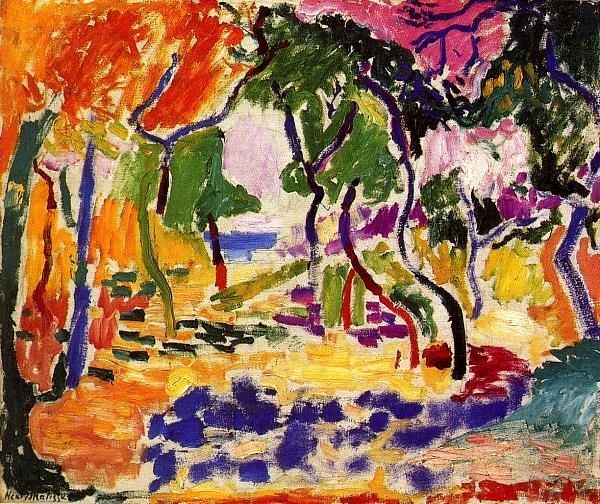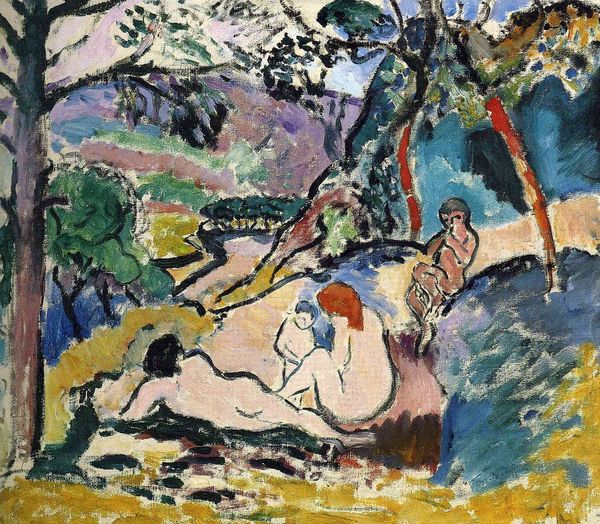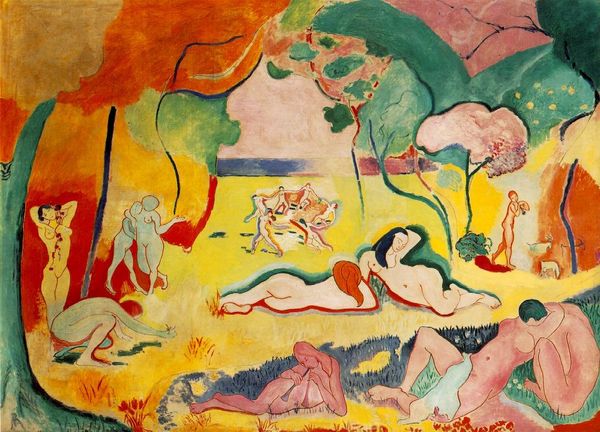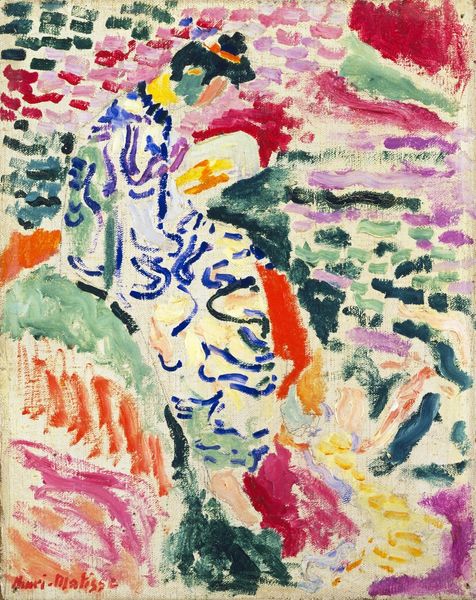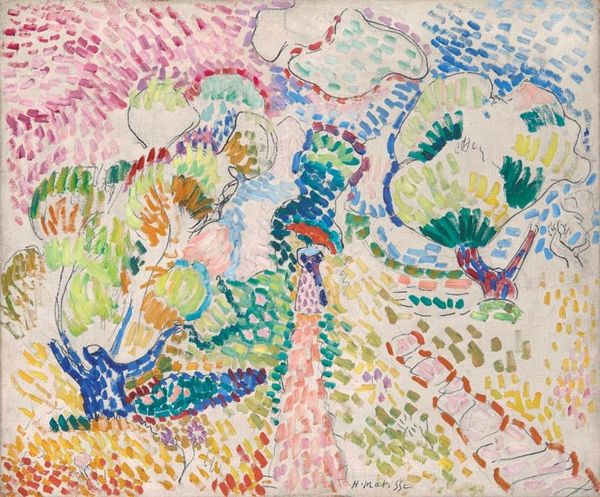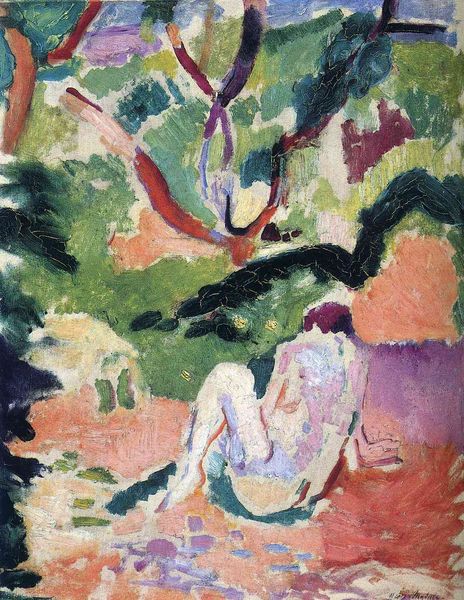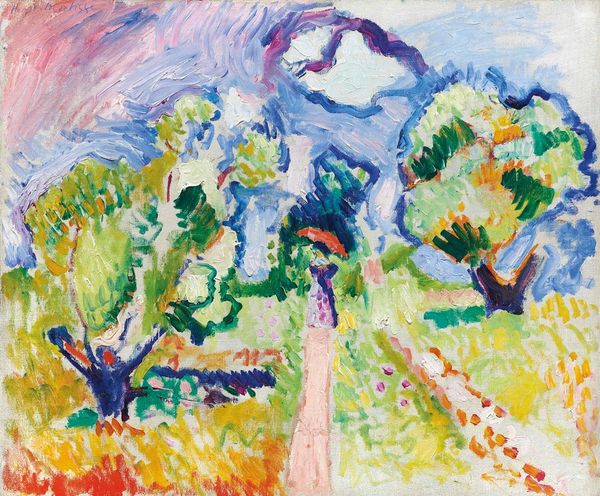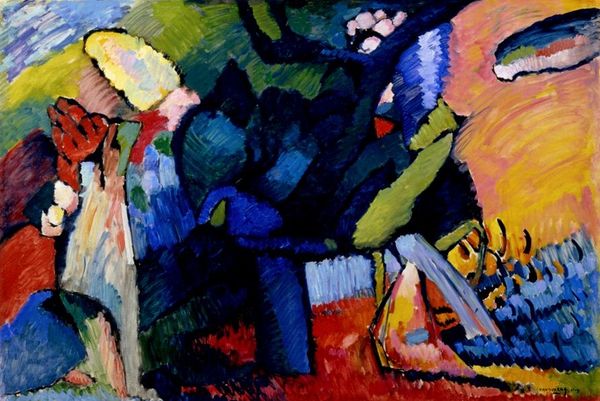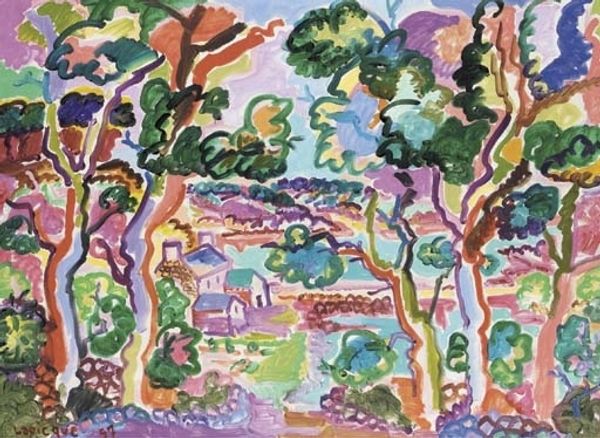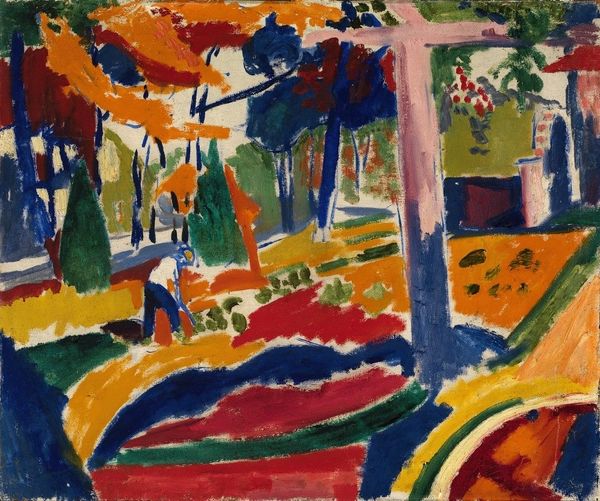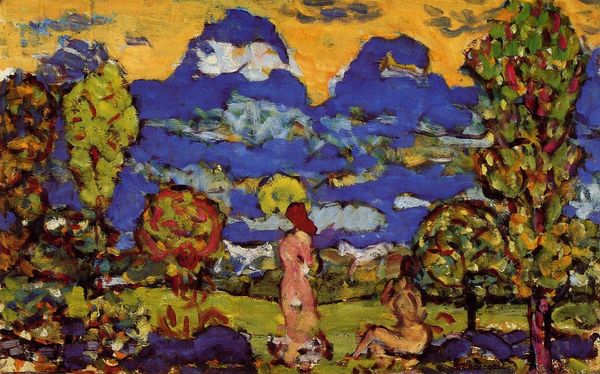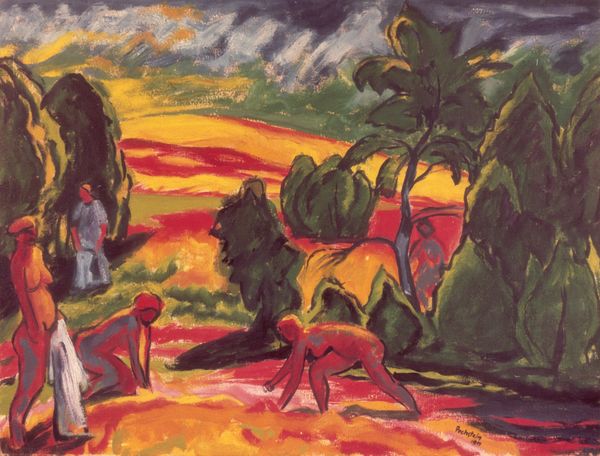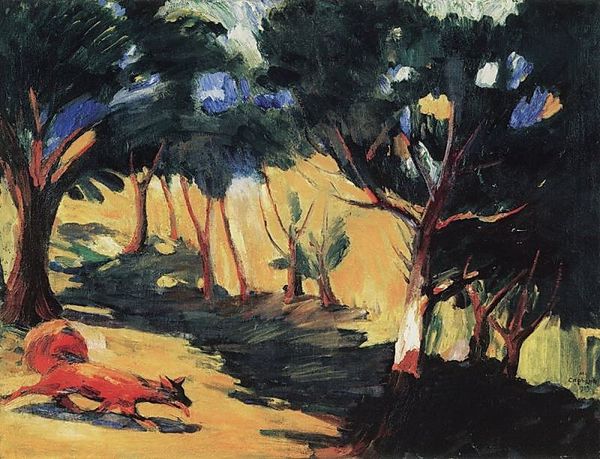
painting, oil-paint
#
fauvism
#
fauvism
#
painting
#
oil-paint
#
landscape
#
figuration
#
genre-painting
#
post-impressionism
#
nude
Copyright: Public domain US
Curator: Here we have Henri Matisse's "The Joy of Life (Sketch)" from 1906. Matisse, of course, was a leading figure in the Fauvist movement. This sketch offers us a glimpse into the development of a key work in his oeuvre. Editor: My immediate impression is of pure, unadulterated colour. The thick brushstrokes and almost reckless application of paint give it a raw, unfinished energy. It feels both joyous and unsettling, almost a bacchanal captured in a moment. Curator: Absolutely. We see the exploration of freedom, not just in the subject matter – the reclining nudes in a pastoral setting, harking back to classical ideals – but also in the liberation of colour from representational accuracy. Considering the prevailing social norms of the early 20th century, the open depiction of nudity and pleasure could be seen as quite radical, couldn't it? Especially given his bourgeois background. Editor: Yes, but I'm also struck by how the very materials themselves – the oil paint, the canvas – are so prominently displayed. The roughness of the sketch underscores the act of making, the physical labour of the artist, pushing back against academic traditions of seamless illusionism. He's making the *process* of creating the painting as important as the subject matter. It really questions what constitutes ‘finished’ work. Curator: That emphasis is so critical, I think, to understanding Matisse's larger project. By liberating colour and form, he disrupts the established hierarchies within art, offering new possibilities for expression and representation. We see the body itself reimagined, freed from traditional constraints of form. This connects powerfully to broader narratives of identity, liberation, and challenging of normative structures within society. Editor: Indeed, there's a materiality to the bodies themselves, rendered in swathes of colour, that emphasizes their presence, their physicality, over idealized beauty. I’d love to know more about the specific pigments he chose and where he sourced them... the materiality directly affects the politics of this art object. Curator: Thinking about "The Joy of Life (Sketch)" in this way enriches our experience, placing it within a context of artistic innovation and, importantly, social dialogue. It's so easy to only focus on the painting and not see it as part of his wider engagement in cultural and social concerns. Editor: Agreed. For me, considering the materials and the making deepens our understanding. It allows us to examine not only what is depicted, but also how it came to be, who made it, and under what conditions – this really illuminates how art impacts the real world.
Comments
No comments
Be the first to comment and join the conversation on the ultimate creative platform.
